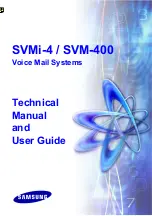
PLOWING CONSIDERATIONS
PROPER WAY TO STACK SNOW
In the snow removal business, the ability to stack snow
is critical. But, there is a right and a wrong way to tackle
the stacking job. The biggest mistake made when stacking
snow is thinking of the pusher as a bulldozer.
Since it is not a solid piece of steel like a dozer or
traditional box plow, but rather a unique, sectional design,
the Sectional Sno-Pusher™ requires a different approach.
1. To properly stack with the pusher, lift the pusher at the same rate of
speed that the machine is engaging the snow pile.
2. Begin lifting as soon as initial contact occurs on the outside edges. If
you fail to lift at the same rate of advance, you will notice each section
being forced back towards the frame in rapid succession. This causes
premature wear on the blocks and moldboard sections. In addition,
waiting to lift the pusher until you’ve already engaged the snow pile with
the main portion of the blade causes tremendous down pressure on the
polyurethane blocks. This can lead to significant damage.
3. While going up with the pusher, it is suggested to slightly tilt the pusher
up (towards the sky) to maximize driving force of the machine and to
maximize the height of the snow pile, if necessary.
4. To minimize left over snow attached to the pusher from falling off and
creating a mess on the pavement, liberally tilt the pusher up and down
above or next to the snow pile to remove stuck snow on the frame of the
pusher.
21
20
www.
arcticsnowproducts
.com
Arctic Sectional Sno-Pusher™
Owner’s Manual
1. Before you begin, it’s important to make sure your equipment and pusher are both set for proper operation.
2. If your equipment offers a float option, disable this option when operating the Sectional Sno-Pusher™. The float option will detract from proper
operation of the pusher.
3. The Sectional Sno-Pusher™ features drop and go technology for quick and efficient plowing. This on-the-go, automatic adjustment of the
pusher is a result of the patented slip hitch design which enables the pusher to move up or down independently from the carrier. To maximize
the slip hitch effectiveness, set the pusher in the neutral or middle position.
4. Once an operator gets a feel for the range of motion of the slip hitch, they’ll be able to easily drop the pusher and go. To become familiar with
that range, simply set the pusher on the ground and move the arms of the machine without lifting the pusher off the ground.
5. When you’re on site, you’ll have a feel for the movement of the slip hitch and you’ll be able to quickly recognize the proper angle of the pusher
with simple visual guides integrated in the design. Take note of the triangular holes at the top of the side panels. These holes are the reference
for proper pusher angle. When you drop the pusher to begin work, the moldboard sections should be behind the holes blocking their view from
the operator’s platform – ensuring proper alignment of the pusher. It’s a quick and simple check ensuring optimum performance of the pusher
every time.
6. Proper positioning is also critical to the pusher’s longevity. If the pusher is curled or tilted too much, undo pressure is placed on the bottom row
of polyurethane mounting blocks, accelerating wear. Improper positioning can also inhibit efficient operation of the independent moldboard
sections, reducing effectiveness and preventing proper tripping when encountering obstacles.
OPER
ATIONAL PR
OCEDURE
S
OPER
ATIONAL PR
OCEDURE
S












































